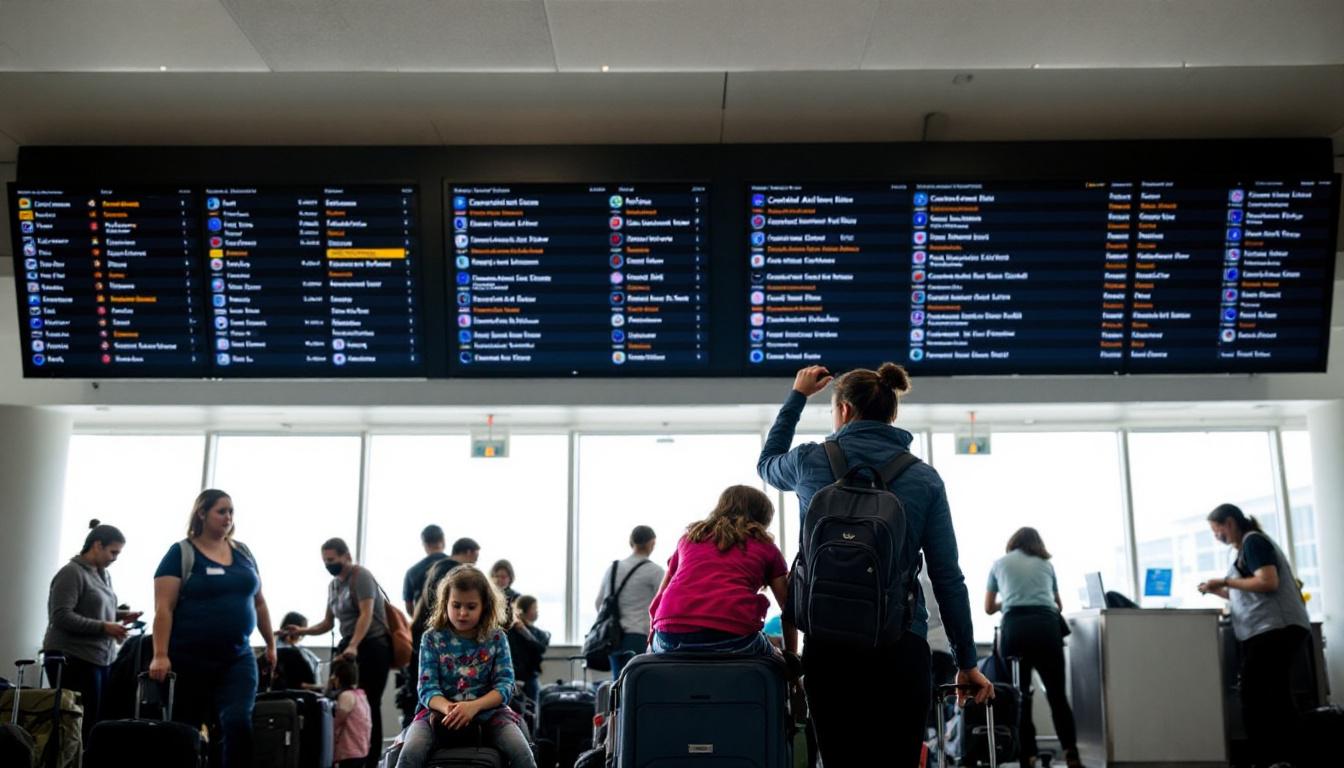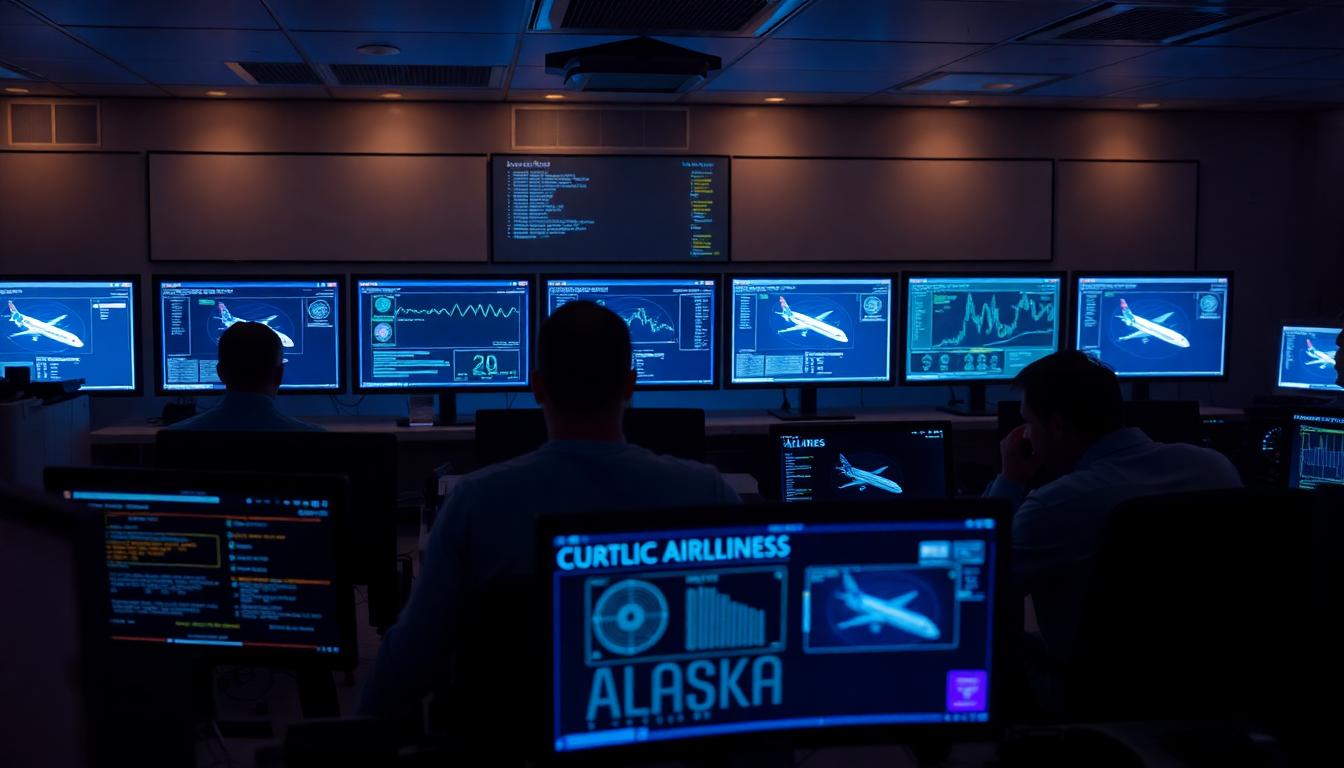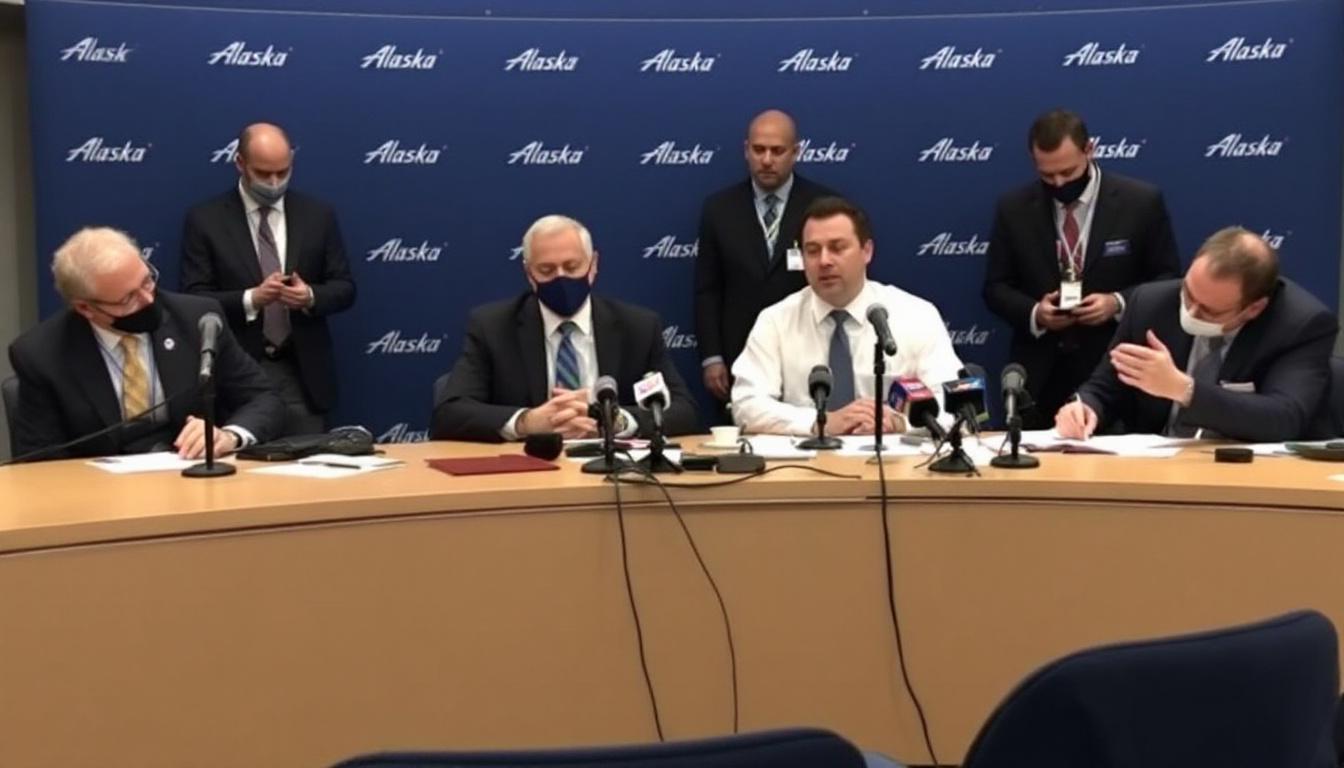Introduction
On the evening of July 20, 2025, thousands of Alaska Airlines passengers found themselves stuck: planes frozen on the tarmac, flights halted in airports, and travel plans suddenly up in the air. Alaska Airlines, a trusted name in West Coast travel, ordered every mainline plane to a full stop. Their reason? A serious information technology (IT) outage—a reminder of how much modern travel depends on invisible networks, coding, and quick decisions.
This is the story of that night: the chaos, the human stories, and how teamwork and technology worked quickly to get everyone safely moving again.
How It Started: A Sudden Shutdown
Everything was normal—until it wasn’t. Around 8 p.m. Pacific Time, airport screens began to freeze and crew radios went silent. At first, some thought it was a local glitch. Within minutes, airline staff realized the problem went across the country. From Seattle to Los Angeles and out to Anchorage, Alaska Airlines and its regional carrier, Horizon Air, were losing the systems that keep planes moving.
By 10:52 p.m. Eastern Time, the Federal Aviation Administration (FAA) issued a ground stop for all Alaska Airlines mainline planes. No new departures. Planes en route could still land, but those awaiting takeoff stayed parked. At its peak, the incident affected hundreds of flights, from coast to coast and even in international airports.
What the Passengers Saw: Stress, Confusion, and Kindness

For travelers, it meant sinking into airport seats, endless lines at terminals, and gate agents fielding tough questions. Kids dozed on suitcases. Some business travelers frantically rebooked on their phones. Elderly couples were seen wrapped in blankets, sipping bottled water, and sharing snacks with strangers.
A family of four, stranded in Portland, tried to keep their toddler busy with puppets on a phone screen. A woman in Seattle, traveling for a funeral, sat quietly alone, her eyes fixed on the glowing Departures board as “Delayed” replaced each flight. Some passengers fumed, their trips upended. Others, relieved the airline put safety first, chatted with strangers who were now, for a few uncertain hours, fellow adventurers.
Staff at every airport—most just as confused as the passengers—offered snacks, information, and, most of all, steadying words. “We’re working the problem,” one tired gate agent said. “We need your patience. We’ll get you in the air as soon as it’s safe.”
Behind the Scenes: A Race in the IT Command Center

A critical error had crashed systems used to dispatch flights, handle check-ins, balance plane weights, and ensure all federal safety checks. Dozens of IT engineers, some still in their pajamas at home, scrambled to log in and help. Phone calls lit up. Senior leaders dialed into late-night conference calls along with outside cybersecurity experts.
What caused the outage? At first, the airline could only confirm it was a software failure—complex, widespread, and fast-moving. Rumors of a hack circulated, especially since Alaska Air Group’s subsidiary, Hawaiian Airlines, had been targeted by cybercriminals not long before. But Alaska officials stressed to the public that no evidence suggested foul play. Safety and security checks ran alongside data forensics.
Every minute, IT and operations teams updated executives, who in turn briefed airport staff. The central goal: protect passenger safety and privacy while restoring enough systems to launch planes again. In a matter of hours, they succeeded. By 11 p.m. Pacific Time, the ground stop was lifted and operations slowly resumed.
For those in the command center, it was a tense reminder: air travel relies on invisible digital threads holding every plane, person, and bag together.
FAA and Airline Leaders Face the Public

As planes began to take off again, officials spoke up. Executives from both Alaska Airlines and the FAA held a late-night press conference.
“Tonight’s ground stop was not about danger in the skies, but about making sure no flight left the ground without every necessary safety check,” said an Alaska Airlines spokesperson. “We know how much stress this causes, especially for those with tight connections, family emergencies, and sleepless kids in terminals. For that, we are truly sorry.”
The FAA echoed this: “Safety is always our top priority. When critical systems go down, it’s our job to put people first—even if it means grounding an entire airline temporarily.”
Reporters peppered both sides with questions: Was this an act of cybercrime? Was anyone at risk? What about refunds and accommodations? Leaders promised complete transparency in the ongoing investigation. They urged ticket holders to stay in touch, keep their receipts, and check flight status before heading to airports in the morning, since some delays would snowball into the next day.
History and Industry: Why These Outages Matter More Than Ever
Alaska Airlines operates a fleet of nearly 300 planes, flying more than 44 million passengers a year to 120 destinations. This was the second such grounding in just over a year—a similar outage happened in 2024. Each time, the source was a technical breakdown, not deliberate sabotage, which highlights just how dependent modern aviation is on software and cybersecurity.
Experts say the aviation industry is a top target for age-old problems and new threats. Not just hackers, but also aging computer systems, rapid updates, and the complexity of keeping every program and device talking to each other. With the cost of each hour grounded running into the millions, airlines must balance speed, trust, and constant vigilance.
Passengers Share Their Stories
Every flight disruption has hundreds of stories behind it. Here are a few from that night:
- Mark, 29, business traveler: “The waiting’s tough, but the airline kept us updated. You could see the frustration, but also people helping each other—sharing chargers, snacks, even hotel codes from reward programs.”
- Sandy, 67, visiting grandkids: “I got stuck in Seattle overnight. A young family let me sit with them and we swapped stories—the kindness helped a lot.”
- Aarti, 41, traveling for medical care: “It was hard, missing my appointment, but better safe than sorry. The gate agent got me a hotel and some breakfast vouchers.”
What Happens Next?
Alaska Airlines has promised a full investigation into the IT failure. Passengers who faced delays are advised to save receipts for any extra costs—hotels, meals, alternate transport—for possible reimbursement. They’re also working on updates to their digital networks, and pledge clearer communication and more training for ground staff, who handled hours of chaos with remarkable calm.
Airline analysts expect other aviation companies to review their own tech layers for vulnerabilities. In a world connected by screens and clouds, even a single outage can ripple into thousands of lives and millions of dollars.
Lessons from the Ground Stop
- Technology makes air travel safe and quick, but also fragile.
- Quick, transparent leadership builds trust—even during chaos.
- Human kindness shines in tough moments: from tired agents to patient parents and strangers who become seatmates for a night.
- Airlines and regulators have to keep moving faster, not just in the skies, but in protecting their networks and giving support to staff and guests when things go wrong.
Conclusion
The July 2025 Alaska Airlines ground stop is more than a travel nightmare; it’s a window into the high-tech ballet behind every flight, and a reminder of how even the best-run systems can have bad days. What matters most is how airlines, staff, and passengers face those bad days together.
Next time you step onto a plane, remember: behind every ticket, every takeoff, is a vast, dedicated team—coding, troubleshooting, assuring safety—working for you long before you board.
To contact us click Here.







